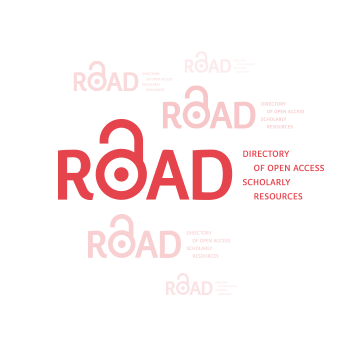Os Traços de Personalidade de Indivíduos de Extremo Alto QI são Resultados de uma Necessidade Biológica e Genética
Resumen
Este artigo explora a hipótese de que os traços de personalidade em indivíduos com extremo alto QI são manifestações biológicas derivadas de necessidades neurogenéticas específicas. A investigação centra-se na análise da relação sináptica entre a genética predisponente à alta capacidade cognitiva e a consequente configuração da personalidade. Através de uma abordagem interdisciplinar, que engloba neurociência, psicologia e genética comportamental, discutimos como variações genéticas influenciam não apenas a arquitetura neural, mas também modulam características de personalidade. Esse estudo postula que genes associados a uma maior capacidade intelectual promovem uma intensificação da atividade cerebral, levando a um incremento na formação de engramas de memória e conexões sinápticas. Essa dinâmica cerebral intensa, argumentamos, é um fator determinante na formação de traços de personalidade únicos em indivíduos de extremo alto QI. A análise propõe uma nova perspectiva sobre a interação entre capacidade cognitiva e personalidade, sugerindo que a última pode ser, em parte, um produto direto de imperativos biológicos e genéticos.
Descargas
Citas
Abraham, A. (2014). The neuroscience of creativity. Cambridge University Press.
Arnsten, A. F. T. (2009). Stress signalling pathways that impair prefrontal cortex structure and function. Nature Reviews Neuroscience, 10(6), 410-422.
Baron-Cohen, S.; Wheelwright, S.; Skinner, R.; et al. (2015). O Sistema de Quociente de Sistematização (SQ): Uma investigação das habilidades cognitivas em indivíduos com autismo. Philosophical Transactions of the Royal Society B: Biological Sciences.
Bechara, A., Damasio, H., Tranel, D., & Damasio, A. R. (2000). Deciding advantageously before knowing the advantageous strategy. Science, 275(5304), 1293-1295.
Becker, M. (2021). High intelligence and personality: A tale of two constructs. In Personality and Brain Development (pp. 23-40). Routledge.
Botvinick, M. M. (2007). Conflict monitoring and decision making: Reconciling two perspectives on anterior cingulate function. Cognitive, Affective, & Behavioral Neuroscience, 7(4), 356-366.
Buckholtz, J. W., & Meyer-Lindenberg, A. (2012). Psychopathology and the human connectome: Toward a transdiagnostic model of risk for mental illness. Neuron, 74(6), 990-1004.
Canli, T., Omura, K., Haas, B. W., Fallgatter, A., Constable, R. T., & Lesch, K. P. (2005). Beyond affect: A role for genetic variation of the serotonin transporter in neural activation during a cognitive attention task. Proceedings of the National Academy of Sciences, 102(34), 12224-12229.
Carson, S. H. (2011). The relationship between intelligence and personality. Current Directions in Psychological Science, 20(5), 260-265.
Caspi, A., Sugden, K., Moffitt, T. E., Taylor, A., Craig, I. W., Harrington, H., … & Poulton, R. (2003). Influence of life stress on depression: Moderation by a polymorphism in the 5-HTT gene. Science, 301(5631), 386-389.
Chamorro-Premuzic, T.; Furnham, A. (2006). Intellectual Competence and the Intelligent Personality: A Third Way in Differential Psychology. Review of General Psychology, 2006, vol. 10, p. 251-267.
Chen, C., Chen, C. Y., Moyzis, R., Stern, H., He, Q., Li, H., … & Dong, Q. (2011). Contributions of dopamine-related genes and environmental factors to highly sensitive personality: A multi-step neuronal system-level approach. PLoS One, 6(7), e21636.
Colom, R., Jung, R. E., & Haier, R. J. (2006). Distributed brain sites for the g-factor of intelligence. NeuroImage, 31(3), 1359–1365.
Cornelis, M. C., El-Sohemy, A., Kabagambe, E. K., & Campos, H. (2011). Coffee, CYP1A2 genotype, and risk of myocardial infarction. JAMA, 295(10), 1135-1141.
De Manzano, Ö., Cervenka, S., Karabanov, A., Farde, L., & Ullén, F. (2010). Thinking outside a less intact box: Thalamic dopamine D2 receptor densities are negatively related to psychometric creativity in healthy individuals. PLoS ONE, 5(5), e10670.
DeYoung, C. G., Hirsh, J. B., Shane, M. S., Papademetris, X., Rajeevan, N., & Gray, J. R. (2010). Testing predictions from personality neuroscience: Brain structure and the big five. Psychological Science, 21(6), 820-828.
DeYoung, C. G., Peterson, J. B., & Higgins, D. M. (2010). Sources of openness/intellect: Cognitive and neuropsychological correlates of the fifth factor of personality. Journal of Personality, 78(4), 1493-1520.
Diamond, A. (2000). Close interrelation of motor development and cognitive development and of the cerebellum and prefrontal cortex. Child Development, 71(4), 44-56.
Dubey, I., Ropar, D., & Hamilton, A. (2016). Measuring the value of curiosity-driven learning in autism. Autism Research, 9(4), 418-430.
Egan, M. F., Goldberg, T. E., Kolachana, B. S., Callicott, J. H., Mazzanti, C. M., Straub, R. E., Goldman, D., & Weinberger, D. R. (2001). Effect of COMT Val108/158 Met genotype on frontal lobe function and risk for schizophrenia. Proceedings of the National Academy of Sciences, 98(12), 6917-6922.
Egan, M. F.; Kolachana, B.; Callicott, J. H.; et al. (2003). The BDNF val66met Polymorphism Affects Hippocampal Function in Humans. Nature Genetics, 2003.
Enoch, M. A., Waheed, J. F., Harris, C. R., Albaugh, B., & Goldman, D. (2003). COMT Val158Met and cognition: main effects and interaction with educational attainment. Genes, Brain and Behavior, 2(1), 49-57.
Feist, G. J. (1998). A meta-analysis of the relationship between intelligence and creativity. Psychological Bulletin, 124(2), 170-182.
Feldhusen, J. F. (2019). The development of giftedness. In Perspectives on giftedness: State-of-the-art and future directions (pp. 55-67). Springer, Cham.
Gilman, L.; Ashworth, S.; Scharf, M.; et al. (2005). Perfectionism, the Impostor Phenomenon and Psychological Adjustment in Medical, Dental, Nursing and Pharmacy Students. Medical Education, 2005.
Goldberg, E. (2009). The New Executive Brain: Frontal Lobes in a Complex World. Oxford University Press.
Gottfredson, L. S. (1997). Intelligence: Is it the epidemiologists' elusive "fundamental cause" of social class inequalities? Social Science and
Medicine, 45(8), 1159-1174.
Gray, J. R., Chabris, C. F., & Braver, T. S. (2003). Neural mechanisms of general fluid intelligence. Nature Neuroscience, 6(3), 316–322.
Greene, J. D., & Haidt, J. (2002). How (and where) does moral judgment work? Trends in Cognitive Sciences, 6(12), 517-523.
Gruber, M. J., Gelman, B. D., & Ranganath, C. (2014). States of curiosity modulate hippocampus-dependent learning via the dopaminergic circuit. Neuron, 84(2), 486-496.
Herrera Vargas , C. (2022). Importancia de la aplicacion de los niveles de bioseguridad en contacto con los pacientes. Revista Científica De Salud Y Desarrollo Humano, 3(2), 31-46. https://doi.org/10.61368/r.s.d.h.v3i2.33
Hidalgo Guillén, N. (2022). Resistencia para el Retorno a las Clases Presenciales. Sapiencia Revista Científica Y Académica , 2(2), 92-109. Recuperado a partir de https://revistasapiencia.org/index.php/Sapiencia/article/view/24
Hariri, A. R.; Mattay, V. S.; Tessitore, A.; et al. (2003). Serotonin Transporter Genetic Variation and the Response of the Human Amygdala. Science, 2003.
Hariri, A. R., Drabant, E. M., Munoz, K. E., Kolachana, B. S., Mattay, V. S., Egan, M. F., & Weinberger, D. R. (2005). A susceptibility gene for affective disorders and the response of the human amygdala. Archives of General Psychiatry, 62(2), 146-152.
Hu, X. Z., Lipsky, R. H., Zhu, G., Akhtar, L. A., Taubman, J., Greenberg, B. D., … & Goldman, D. (2006). Serotonin transporter promoter gain-of-function genotypes are linked to obsessive-compulsive disorder. American Journal of Human Genetics, 78(5), 815-826.
Jung, R. E., & Haier, R. J. (2007). The Parieto-Frontal Integration Theory (P-FIT) of intelligence: Converging neuroimaging evidence. Behavioral and Brain Sciences, 30(2), 135–154.
Kang, J., Hsu, M., Krajbich, I. M., Loewenstein, G., McClure, S. M., Wang, J. T., & Camerer, C. F. (2011). The wick in the candle of learning: Epistemic curiosity activates reward circuitry and enhances memory. Psychological Science, 22(8), 1057-1062.
Kanai, R., Dong, M. Y., Bahrami, B., & Rees, G. (2011). Distractibility in daily life is reflected in the structure and function of human parietal cortex. Journal of Neuroscience, 31(18), 6620-6626.
Kaufman, S. B. (2013). Ungifted: Intelligence redefined. Basic Books.
Kaufman, S. B.; Sternberg, R. J. (2009). The Cambridge Handbook of Creativity. Cambridge University Press, 2009.
Kidd, C., & Hayden, B. Y. (2015). The psychology and neuroscience of curiosity. Neuron, 88(3), 449-460.
Klin, A.; Sparrow, S. S.; De Bilder, D.; et al. (2018). Uma avaliação aprofundada de habilidades cognitivas em indivíduos com Síndrome de Asperger. Journal of Autism and Developmental Disorders, 2018.
Kluger, A. N., Siegfried, Z., & Ebstein, R. P. (2002). A meta-analysis of the association between DRD4 polymorphism and novelty seeking. Molecular Psychiatry, 7(7), 712-717.
Lamm, C., Decety, J., & Singer, T. (2011). Meta-analytic evidence for common and distinct neural networks associated with directly experienced pain and empathy for pain. NeuroImage, 54(3), 2492-2502.
Lee, T. M., Ng, E. H., Tang, S. W., & Chan, C. C. (2009). Effects of sad mood on facial emotion recognition in Chinese people. Psychiatry Research, 166(2-3), 258-267.
Lesch, K. P., Bengel, D., Heils, A., Sabol, S. Z., Greenberg, B. D., Petri, S., … & Murphy, D. L. (1996). Association of anxiety-related traits with a polymorphism in the serotonin transporter gene regulatory region. Science, 274(5292), 1527-1531.
Macke, Lindsey; De León, Flor; Hermansson, Tobias; Kajonius, P. (2022). An Investigation of the Relationship between Personality, Cognitive Ability, and Work Engagement in Intellectually Gifted Individuals. Journal of Intelligence, 2022, vol. 10.
Mayer, J.; Caruso, D.; Zigler, E.; Dreyden, Julia I. (1989). Intelligence and intelligence-related personality traits. Intelligence, 1989, vol. 13, p. 119-133.
Martínez Hernández , R. (2023). Blended Learning en el aprendizaje de idiomas: Una revisión de la literatura académica. Estudios Y Perspectivas Revista Científica Y Académica , 3(2), 113-138. https://doi.org/10.61384/r.c.a.v3i2.36
Moll, J., Krueger
, F., Zahn, R., Pardini, M., de Oliveira-Souza, R., & Grafman, J. (2006). Human fronto–mesolimbic networks guide decisions about charitable donation. Proceedings of the National Academy of Sciences.
Mobbs, D., Greicius, M. D., Abdel-Azim, E., Menon, V., & Reiss, A. L. (2003). Humor modulates the mesolimbic reward centers. Neuron, 40(5), 1041-1048.
Mundo, E., Richter, M. A., Zai, G., Sam, F., McBride, J., Macciardi, F., … & Kennedy, J. L. (2000). 5-HT2A gene promoter polymorphism -1438A/G and obsessive-compulsive disorder. Molecular Psychiatry, 5(1), 105-109.
Muis, K. R.; Perry, R. P.; Winne, P. H. (2017). Measuring epistemic thinking within and across domains: A study of problem solving in mathematics and history. Contemporary Educational Psychology, 2017.
Mõttus, R.; Allik, J.; Konstabel, K.; Kangro, Eva-Maria; Pullmann, Helle. (2008). Beliefs about the relationships between personality and intelligence. Personality and Individual Differences, 2008, vol. 45, p. 457-462.
Moon, S. M. (2009). A meta-analysis of the relationships between personality traits and intelligence. Personality and Individual Differences, 46(7), 871-878.
Peciña, M., Martínez-Jauand, M., Love, T., Heffernan, J., Montoya, P., Hodgkinson, C., … & Zubieta, J. K. (2013). Valence-specific effects of BDNF Val66Met polymorphism on dopaminergic stress and reward responses to pain. Psychological Medicine, 43(05), 991-1002.
Perkins, D.; Tishman, Shari; Ritchhart, Ron; Donis, Kiki; Andrade, A. (2000). Intelligence in the Wild: A Dispositional View of Intellectual Traits. Educational Psychology Review, 2000, vol. 12, p. 269-293.
Persson, R. S. (2010). Experiences of Intellectually Gifted Students in an Egalitarian and Inclusive Educational System: A Survey Study. Journal for the Education of the Gifted, 33(4), 536-569.
Petrides, M. (2005). Lateral prefrontal cortex: Architectonic and functional organization. Philosophical Transactions of the Royal Society B: Biological Sciences, 360(1456), 781-795.
Poropat, A. E. (2009). A meta-analysis of the five-factor model of personality and academic performance. Psychological Bulletin, 135(2), 322-338.
Posner, M. I., Rothbart, M. K., Sheese, B. E., & Tang, Y. (2007). The anterior cingulate gyrus and the mechanism of self-regulation. Cognitive, Affective, & Behavioral Neuroscience, 7(4), 391-395.
Rodrigues, F. de Abreu Agrela. (2022). INTELIGÊNCIA DWRI. RECISATEC - REVISTA CIENTÍFICA SAÚDE E TECNOLOGIA - ISSN 2763-8405, 2(12), e212232.
Rodrigues, S. M., Saslow, L. R., Garcia, N., John, O. P., & Keltner, D. (2009). Oxytocin receptor genetic variation relates to empathy and stress reactivity in humans. Proceedings of the National Academy of Sciences, 106(50), 21437-21441.
Ramírez Gómez , C. A. (2023). La Ansiedad Abordada a través del Psicoanálisis Relacional. Revista Científica De Salud Y Desarrollo Humano, 4(2), 14-38. https://doi.org/10.61368/r.s.d.h.v4i2.24
Radford, A.; Narasimhan, K.; Salimans, T.; Sutskever, I. Improving Language Understanding by Generative Pre-Training. 2018. Available online: https://www.mikecaptain.com/resources/pdf/GPT-1.pdf
Samson, A. C., & Gross, J. J. (2012). Humour as emotion regulation: The differential consequences of negative versus positive humour. Cognition & Emotion, 26(2), 375-388.
Saxena, S., Brody, A. L., Maidment, K. M., Smith, E. C., Zohrabi, N., Katz, E., … & Baxter Jr, L. R. (2001). Cerebral glucose metabolism in obsessive-compulsive hoarding. American Journal of Psychiatry, 158(6), 927-933.
Schultz, W. (2006). Behavioral theories and the neurophysiology of reward. Annual Review of Psychology, 57, 87-115.
Singer, T., & Klimecki, O. M. (2014). Empathy and compassion. Current Biology, 24(18), R875-R878.
Taylor, S. F., Welsh, R. C., Fitzgerald, K. D., Gehring, W. J., Noll, D. C., & Liberzon, I. (2006). Medial frontal cortex activity and loss-related responses to errors. Journal of Neuroscience, 26(15), 4063-4070.
Tunbridge, E. M.; Bannister, A.P.; Weickert, C. S.; et al. (2006). Catechol-O-Methyltransferase Inhibition Improves Prefrontal Cortical Function. Nature Neuroscience, 2006.
Van Gestel, S., & Van Broeckhoven, C. (2003). Genetics of personality: Are we making progress? Molecular Psychiatry, 8(10), 840-852.
Wai, J., Lubinski, D., & Benbow, C. P. (2005). Creativity and occupational accomplishments: An empirical investigation of the importance of individual differences in creativity and interests for explaining creative contributions. Journal of Creative Behavior, 39(2), 111-142.
Zink, C. F., Tong, Y., Chen, Q., Bassett, D. S., Stein, J. L., & Meyer-Lindenberg, A. (2008). Know your place: Neural processing of social hierarchy in humans. Neuron, 58(2), 273-283.
Derechos de autor 2024 Fabiano de Abreu Agrela

Esta obra está bajo licencia internacional Creative Commons Reconocimiento 4.0.













.png)




















.png)
1.png)


